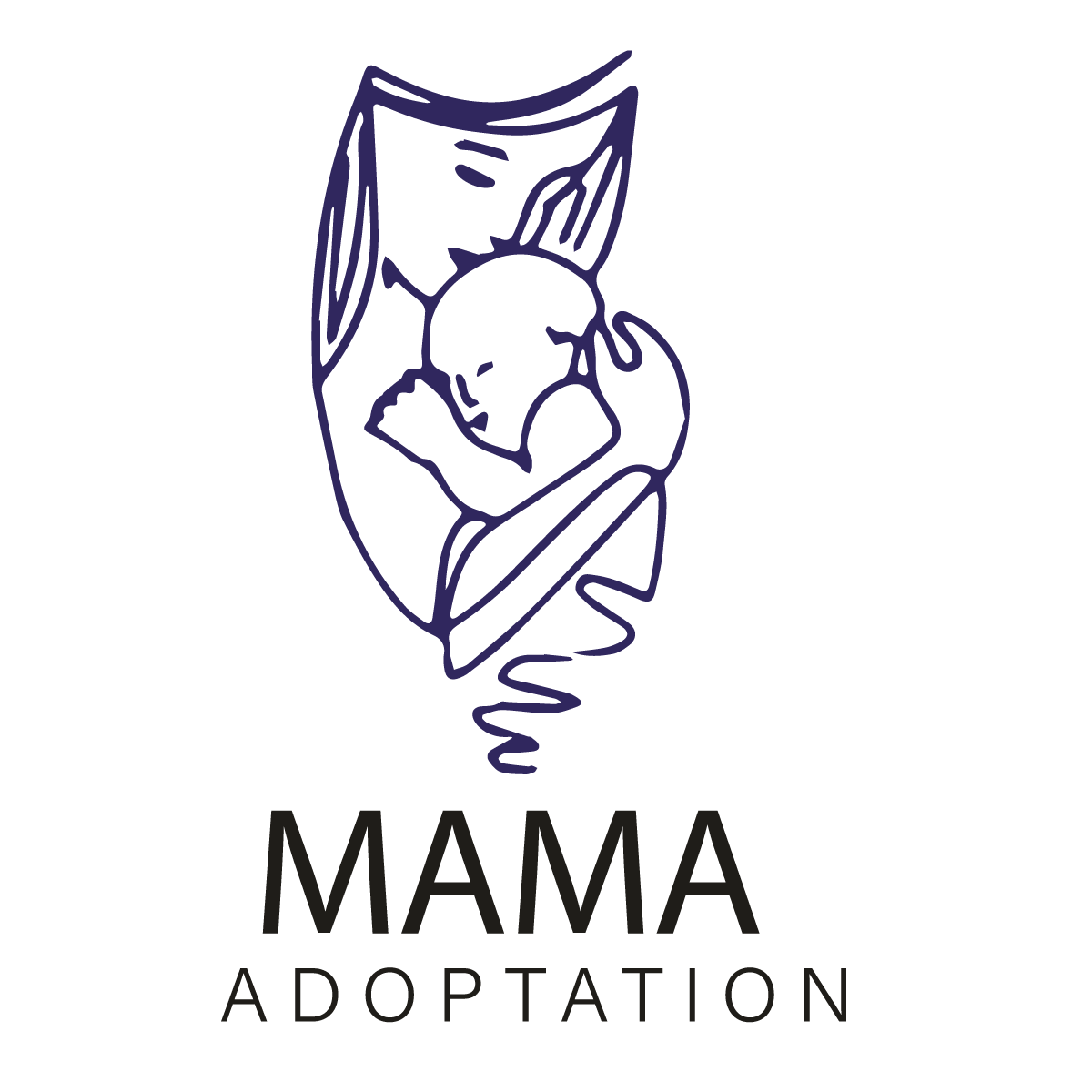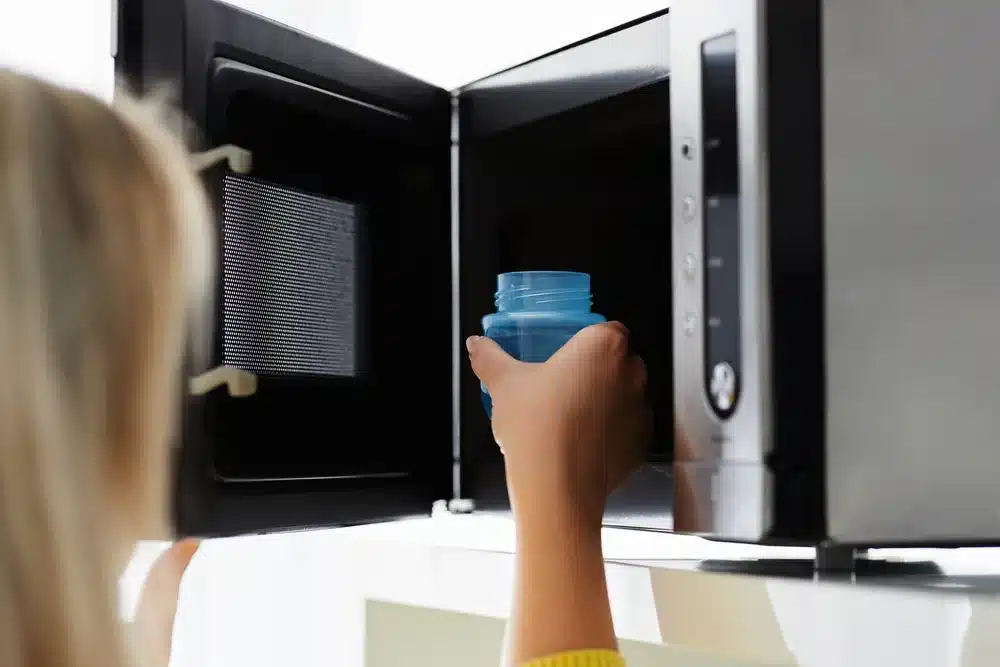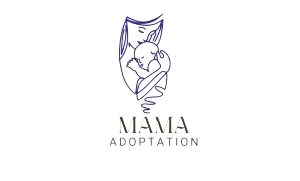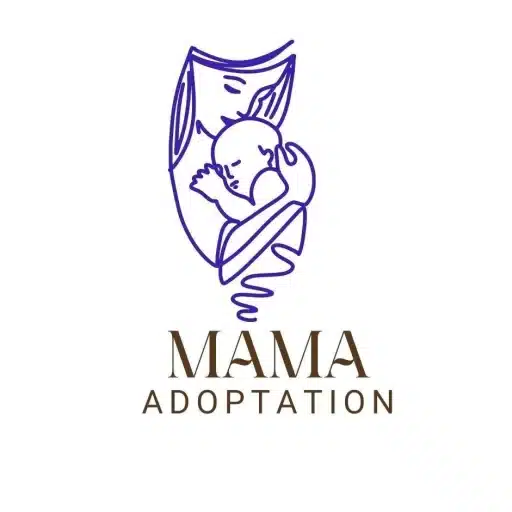No! It’s not convenient to warm baby bottle in a microwave. In this guide, I’ll delve into the safety and viability of microwaving baby bottles, specifically exploring renowned brands like Avent, Dr. Brown, Tommee Tippee, and more. Understanding the dos and don’ts of this practice is essential for ensuring your baby’s well-being during feeding times. Join me!
- Are Baby Bottles Microwaves Safe?
- Are Tommee Tippee baby bottles microwave safe?
- Are Dr. Brown’s baby bottles microwave safe?
- Are Avent baby bottles microwave safe?
- Are Comotomo Bottles Microwaves Safe?
- How Long Should You Microwave Baby Bottles in the Microwave?
- Microwaving Glass vs plastic Baby Bottles
- Can you Heat up Baby Milk in a Bottle in the Microwave?
- Does Microwaving Baby Bottles Cause Cancer?
- Should you include the nipple when heating baby bottles in the microwave?
- Conclusion:
- FAQ’s
As an expert pediatrician, I will explain the different aspects of microwaving baby bottles, including the complexities of each brand’s recommendations and the larger concerns for effective and safe bottle warming.
Are Baby Bottles Microwaves Safe?
The safety of microwaving baby bottles is a major issue for parents.
Even though many baby bottles say they can go in the microwave, experts say it’s not a good idea to warm your baby’s milk that way. The main problem is that the bottles might explode if they stay in the microwave for too long. If you use plastic bottles, they could also let out harmful stuff like BPA and other bad chemicals if you heat them for more time than they suggest.
Are Tommee Tippee baby bottles microwave safe?
Yes, Tommee Tippee baby bottles are generally considered microwave-safe. The brand offers specific bottles designed for safe use in microwaves, providing convenience for parents looking for efficient bottle warming solutions. However, it’s crucial to follow the brand’s guidelines and instructions to ensure the proper and safe use of their bottles in microwaves. Always check for any specific recommendations or precautions mentioned by Tommee Tippee to guarantee the well-being of your baby during feeding times.
Are Dr. Brown’s baby bottles microwave safe?
Yes, Dr.Brown’s bottles can be sterilized in a microwave using a microwave steam sterilizer or sterilizing bags specifically designed for bottles. Follow these steps recommended by the Dr. Brown’s guidelines to ensure the safe and effective use of their bottles in the microwave.
- Remove Cap and Nipple: Before microwaving, take off the bottle’s cap and nipple. This ensures even heating and prevents pressure buildup.
- Upright Placement: Place the bottle upright in the microwave. This position helps distribute the heat more evenly.
- Low to Medium Heat: Set the microwave to a low or medium heat setting. Avoid using high heat to prevent overheating.
Related: Why Do My Dr. Brown’s Bottles Leak? (How To Fix Them)
Are Avent baby bottles microwave safe?
Yes, Avent baby bottles are generally considered microwave-safe but use a warm water bath or a bottle warmer rather than a microwave to thaw up chilled formula or breast milk. The likelihood of leaking Phillips Avent baby bottles can increase due to the uneven temperatures and hot spots produced by microwave heating.
Here are some general tips for microwaving Avent baby bottles:
- Remove the bottle cap and nipple before microwaving.
- Ensure that the bottle is placed upright in the microwave.
- Use a low to medium heat setting to heat the milk or formula.
- Shake the bottle well after heating to even out the temperature.
- Always check the specific instructions provided by Philips Avent for the particular model of baby bottle you have, as guidelines may vary. Additionally, be cautious about using the microwave for bottles with metal parts, as these should not be microwaved.
If you have a specific Avent bottle model in mind, you may want to check the product packaging or the official Philips Avent website for detailed instructions and safety recommendations.
Related: Leaking Philips Avent Bottles: Causes And How To Fix Them
Are Comotomo Bottles Microwaves Safe?
Comotomo is one of best baby bottles known for its silicone baby bottles, and they are typically microwave safe. Here are some general tips for microwaving Comotomo bottles:
- Remove the bottle cap and nipple before microwaving.
- Place the bottle upright in the microwave.
- Use a low to medium heat setting to warm the milk or formula.
- Shake the bottle well after heating to ensure even temperature distribution.
1. Are Nanobebe bottles microwave safe?
Yes, Nanobebe bottles are normally microwave safe. In general, before microwaving the bottle, remove the cap and nipple, place it upright, and set the heat to low to medium. After heating, shake the bottle thoroughly to obtain a uniform temperature. Check the product label or the official Nanobebe website for detailed guidance and safety recommendations according to your bottle model.
2. Are MAM bottles microwave safe?
Yes, MAM bottles are generally considered microwave-safe. However, it’s important to follow the manufacturer’s guidelines for the specific model of MAM bottle you have. In general, you should remove the bottle’s cap and nipple before microwaving, place it upright, and use a low to medium heat setting. Always shake the bottle well after heating to ensure an even temperature. Additionally, be cautious about microwaving bottles with metal parts, as this may not be safe.
3. Are Pigeon feeding bottles microwave safe?
Pigeon feeding bottles are generally regarded as microwave-safe. However, it is critical to follow the manufacturer’s instructions for the individual model of Pigeon bottle you own. Typically, rules include removing the bottle’s top and nipple before microwaving, keeping the bottle upright, and using a low to medium heat setting. After microwaving, shake the bottle thoroughly to achieve consistent temperature dispersion.
4. Are NUK bottles microwave safe?
No! NUK bottles aren’t microwave-safe. Remember to remove the cap and nipple before microwaving, and follow low to medium heat settings, adhering to any specific guidelines provided for the particular bottle model.
How Long Should You Microwave Baby Bottles in the Microwave?
The suggested time for microwaving infant bottles varies depending on the volume of liquid, microwave power, and manufacturer standards. In general, it is best to begin with shorter intervals, such as 15 to 30 seconds, and then check the temperature of the milk or formula. Repeat in short intervals as needed until the appropriate temperature is reached. Always observe the bottle manufacturer’s exact instructions, as they may specify accurate heating timings.
- Remember to shake the bottle thoroughly after microwaving to ensure an equitable distribution of heat.
- Be careful not to overheat the liquid, as this might cause hot spots and burn your baby’s mouth.
- If the container contains any metal pieces or the manufacturer warns against microwaving, use other techniques to warm the contents.
Microwaving Glass vs plastic Baby Bottles
Both glass and plastic baby bottles can be used in the microwave, but there are some considerations to keep in mind for each material.
Microwaving Glass Baby Bottles:
- Glass bottles are generally considered microwave-safe, and they don’t contain any chemicals that might leach into the milk or formula during heating.
- Glass distributes heat more evenly than plastic, reducing the risk of unevenly heated liquid.
- It’s important to remove any metal parts, such as bottle caps or rings, before microwaving a glass bottle, as metal can cause the bottle to crack.
Microwaving Plastic Baby Bottles:
- Most baby bottles are constructed of BPA-free plastic, which is thought to be safe to use. However, always verify the manufacturer’s particular guidelines to confirm that the plastic is microwave safe.
- Remove bottle caps and nipples before microwaving plastic bottles to ensure even heating.
- Use low to medium heat settings to reduce the likelihood of plastic warping or the release of hazardous compounds.
When microwaving any baby bottle, regardless of material, it’s important to follow the manufacturer’s guidelines closely. Shake the bottle thoroughly after heating to ensure an even temperature, and always test the temperature of the contents before feeding your baby to prevent burns.
Can you Heat up Baby Milk in a Bottle in the Microwave?
Yes, you can heat up baby milk in a bottle in the microwave, but it’s essential to follow proper guidelines to ensure safety. Here are some general steps to microwave baby milk in a bottle:
- Remove Caps and Nipples: Before microwaving, remove the bottle’s cap and nipple. This allows for even heating and prevents pressure buildup.
- Use Low to Medium Heat: Set the microwave to a low to medium heat setting to avoid overheating the milk. Start with short intervals, such as 15 to 30 seconds, and then check the temperature.
- Shake Thoroughly: After microwaving, shake the bottle well to distribute the heat evenly and check the temperature. Be cautious of hot spots that may form during microwaving.
- Test the Temperature: Before feeding the baby, test the temperature of the milk by placing a few drops on your inner wrist. It should feel warm, not hot.
- Follow Manufacturer’s Guidelines: Always adhere to the specific guidelines provided by the bottle manufacturer. Some bottles may have metal parts or other considerations that affect microwaving.
Does Microwaving Baby Bottles Cause Cancer?
There is no conclusive scientific evidence suggesting that microwaving baby bottles causes cancer.
- According to Study Finds Organization: Scientists from the University of Nebraska-Lincoln have discovered that microwaving baby bottles could release billions of minuscule plastic particles into the food.
- According to MOFFITT Cancer Centre, heating plastic in microwaves could lead to the release of cancer-causing substances known as dioxins into food
Should you include the nipple when heating baby bottles in the microwave?
When heating baby bottles in the microwave, it is advisable to remove the nipple and bottle cap before microwaving. This precaution is taken to ensure even heating of the liquid inside and to prevent potential safety hazards, as nipples and caps may not heat as evenly as the contents. Place the bottle upright in the microwave, use a low to medium heat setting, and shake the bottle thoroughly after microwaving to distribute the heat evenly. Always follow the specific guidelines provided by the bottle manufacturer, and test the temperature on your inner wrist before feeding the baby to ensure it is safe. This practice is designed to prioritize safety and prevent potential risks associated with microwaving baby bottles.
Conclusion:
In conclusion, microwaving baby bottles, when done according to manufacturer guidelines, is generally safe and convenient. Our exploration of popular brands, including Avent, Dr. Brown, Tommee Tippee, Comotomo, Nanobebe, MAM, Pigeon, and NUK, revealed their compatibility with microwave heating. Key practices include removing caps and nipples, using low to medium heat, and shaking bottles thoroughly for even temperature distribution. The article emphasized adherence to specific brand instructions, distinguishing between glass and plastic bottles, testing temperatures before feeding, and dispelling concerns about microwave use causing cancer. The importance of caution with metal parts and removing nipples during microwaving was also highlighted. Overall, microwaving baby bottles can be a safe method, promoting convenience while prioritizing the well-being of infants during feeding.
FAQ’s
Q1: Can I warm baby formula in the microwave?
It is not recommended to put breast milk directly in the microwave. Microwaving can unevenly heat breast milk, leading to potential hot spots that may burn your baby’s mouth. It’s safer to use alternative warming methods like warm water or a bottle warmer.
Q2:Can you put breastmilk in the microwave?
It is not recommended to put breast milk directly in the microwave. Microwaving can unevenly heat breast milk, leading to potential hot spots that may burn your baby’s mouth. It’s safer to use alternative warming methods like warm water or a bottle warmer.
Q3: What is the best bottle warmer for breast milk?
The best bottle warmer for breast milk depends on individual preferences. Some popular options include the Kiinde Kozii, Dr. Brown’s Deluxe Bottle Warmer, and Philips Avent Fast Baby Bottle Warmer. Choose one that fits your needs in terms of speed, ease of use, and compatibility with your bottle type.
Q4: What is the difference between a bottle warmer and a microwave?
A bottle warmer uses controlled and even heat to warm the milk or formula gradually, avoiding hot spots. Microwaving, on the other hand, can lead to uneven heating, potentially causing hot spots and damaging the nutrients in breast milk or formula.
Q5: Can newborns drink cold breast milk?
Yes, newborns can drink cold breast milk. Breast milk is safe for consumption at room temperature or cold from the refrigerator. However, some babies may prefer warm milk, so warming breast milk using a bottle warmer or warm water is a common practice. Always test the temperature before feeding to ensure it’s suitable for your baby.
Related:








